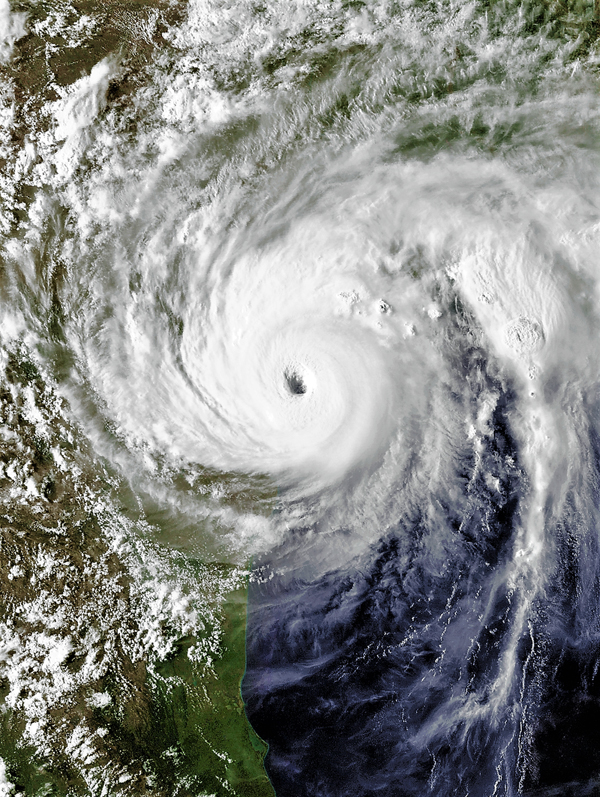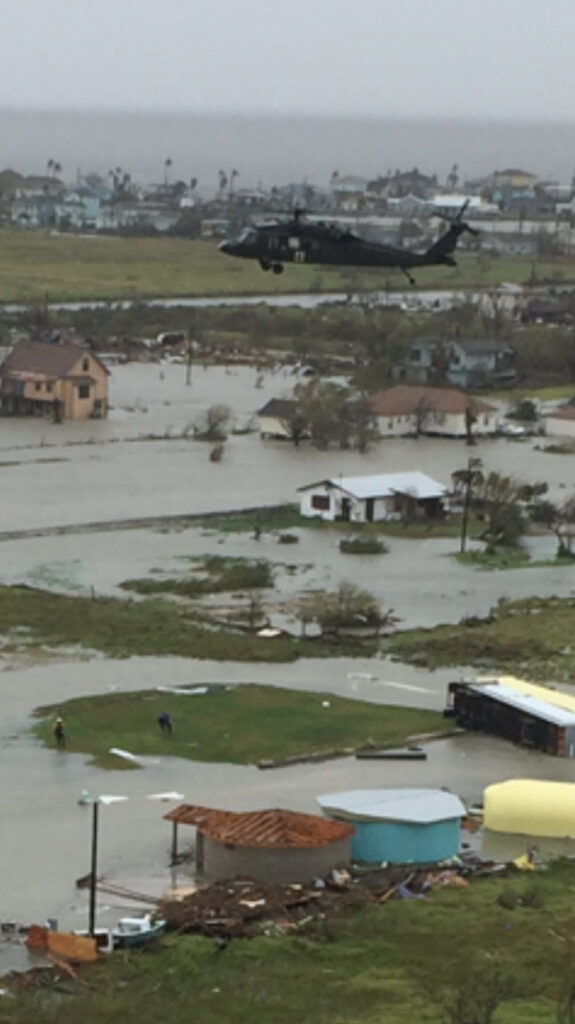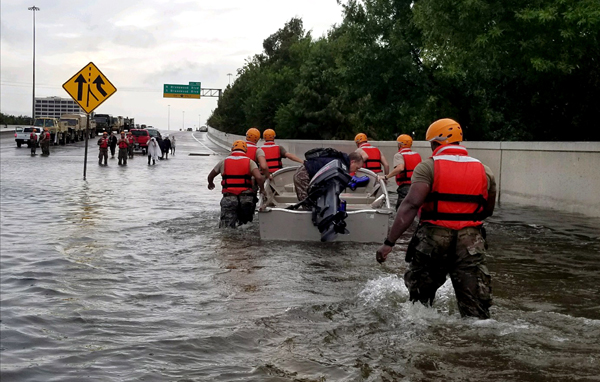- La Feria Community Holds Succesful Business Mixer Event
- Little Nashville to Take Place in Downtown Mercedes
- Lions Basketball Captures District Gold
- La Feria ISD Students Compete in Regional Chess Tournament
- Lions End First Half of 32-4A on a High Note
- La Feria ISD Held Another Successful Parent Conference
- Strong Appearance for Lions at Hidalgo Power Meet
- LFECHS Students Get to Meet Local Actress
- Students Participate in Marine Biology Camp
- Two LFECHS Students Qualify for All-State Band
HARVEY ARRIVES
- Updated: September 8, 2017

Hurricane Harvey near peak intensity on August 25 shortly before landfall in Texas. Photo: US Navy/Wikimedia
Deadly storm bypasses the Rio Grande Valley, devastates Texas Gulf Coast
Hurricane Harvey approached the Texas Gulf coast on Thursday, August 24th, prompting school closures throughout the Rio Grande Valley for the following day as residents braced themselves for the storm’s arrival.
Harvey would bypass the Rio Grande Valley and remain in the Gulf as the weekend progressed, first stalling, then gaining strength and finally making landfall close to Rockport, Texas, in Aransas County on Sunday, August 26th as a Category 4 hurricane with wind speeds of 130 mph.

La Feria city employees helped residents fill sandbags from 3:00 p.m. to 6:00 p.m. at the Public Works warehouse located at 717 W. First St. on Thursday, August 24th in anticipation for the arrival of Hurricane Harvey, which bypassed the Rio Grande Valley on Friday instead remaining in the gulf, stalling, then gaining strength before making landfall in Aransas County at peak intensity as a Category 4 hurricane, with winds at 130 mph on August 26th. Photo: Eric Hoff
The storm would devastate the Gulf Coast, travelling toward Houston, leaving massive flooding and destruction in its wake.

Texas National Guard and Texas Task Force responders conduct aerial search and rescue in Rockport, Holiday Beach, and Port Aransas area. Photo: Texas National Guard/Wikimedia
Local, state and federal agencies quickly rallied providing aid to the victims of this massive storm.
Throughout Texas, more than 300,000 people were left without electricity and billions of dollars of property damage was sustained. At least 38 people were killed, though that number was expected to rise. By August 29, approximately 13,000 people had been rescued across the state while an estimated 30,000 were displaced. The refinery industry capacity was reduced, and oil and gas production was affected in the Gulf of Mexico and inland Texas.
More than 48,700 homes were affected by Harvey throughout the state, including over 1,000 that were completely destroyed and more than 17,000 that sustained major damage; approximately 32,000 sustained minor damage. Nearly 700 businesses were damaged as well.

Soldiers with the Texas Army National Guard move through flooded Houston streets as floodwaters from Hurricane Harvey continue to rise, Monday, August 28, 2017. More than 12,000 members of the Texas National Guard have been called out to support local authorities in response to the storm. Photo: 1st Lt. Zachary West/U.S. Army


